The primary source of the names of Shawli are works by Tolkien, so, putting on this knitted thing, a woman will always feel like a resident of a fabulous country. Haruni - Shawl in the shape of an embracing triangle - created by the designer Emily Ross. Knitting shawls includes a fishnet drawing "Fern" and the recovery of the lush laid strip on the edge. We present you a video master classes on Shawl Haruni with a parallel description.
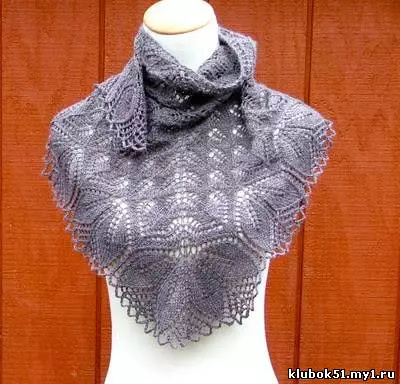
Selection of yarn for work:
Knitting from Kauni.
Kauni (in Estonian "Beautiful") is the name of the Danish company leading the procurement of yarn at the Baltic factories, in particular in the Estonian factory AADE Lõng. The yarn is erased and packaged in standard hundreds, passion, after which they are sold worldwide.
Kauni yarn is famous with its own rare color combination and exceptional quality. The color palette is distinguished by the color palette: natural shades, monocolor and sectional-painted with long delightful and soft color transitions. In addition to high quality, Kauni yarn is distinguished by environmental purity, lack of synthetic fibers.
From the yarn Kauni knit incredible beauty shawl. Even if they are light, air and openwork, all the same are obtained very warm.
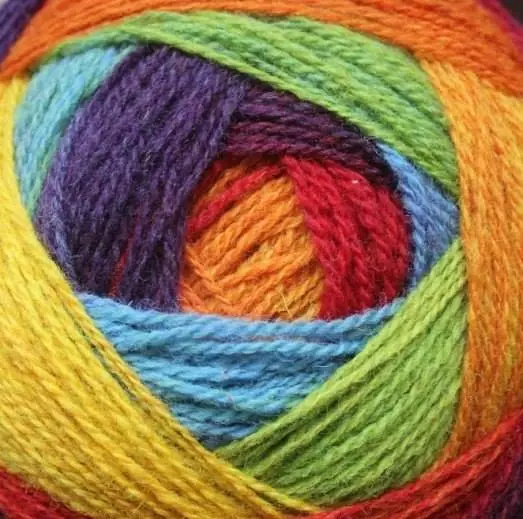
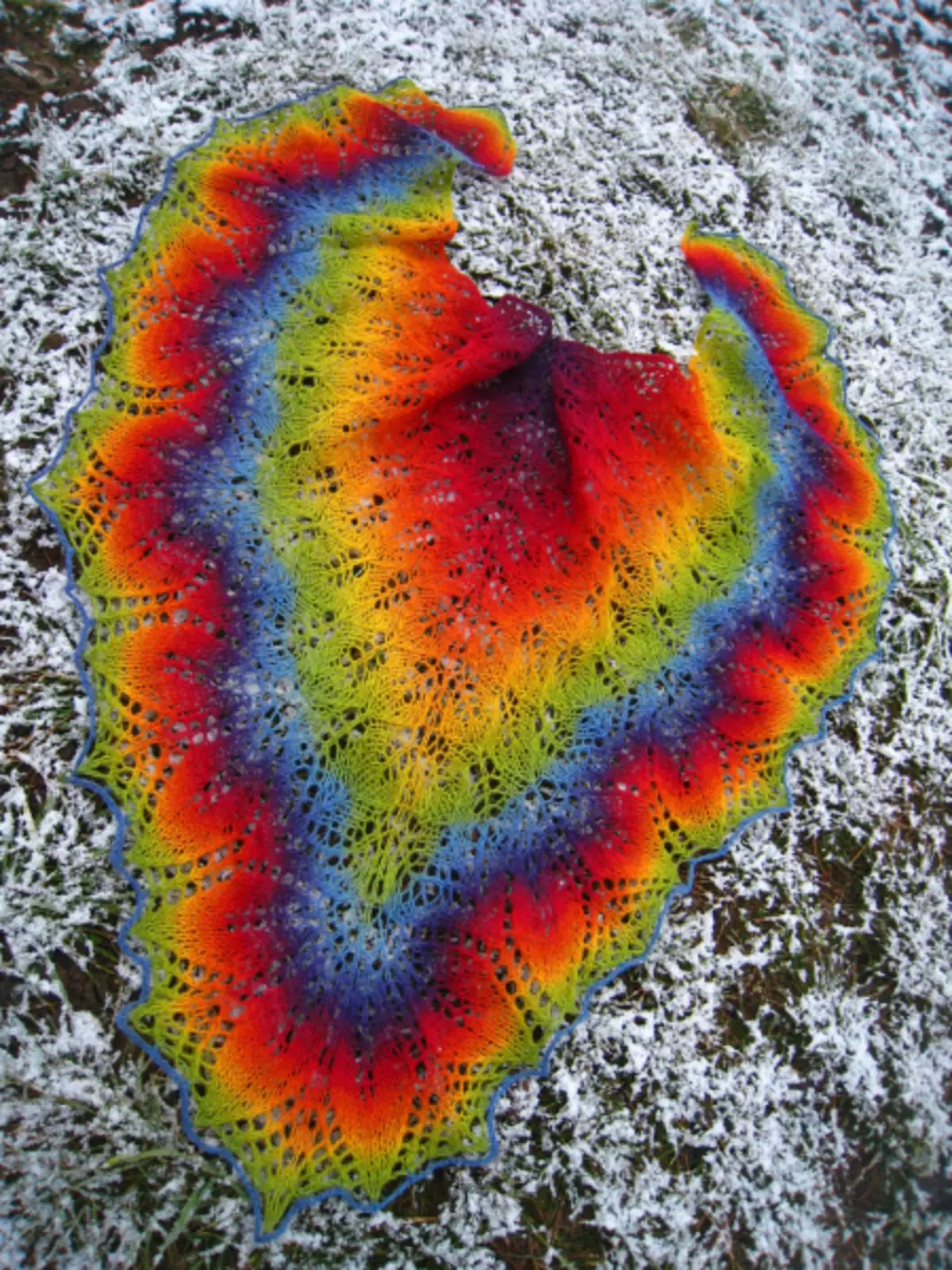
To create a similar sledge cloth, it took a hundred g yarn Kauni 8/1 or 8/2, it was connected by ring spokes number four. The size of the canvas in the finished form is 120x90 cm.
When knitting, the Passka thread must first be filtered, then dried and rewind in the balls so that they are not confused.
Another photo with Kaununi models from Kauni:
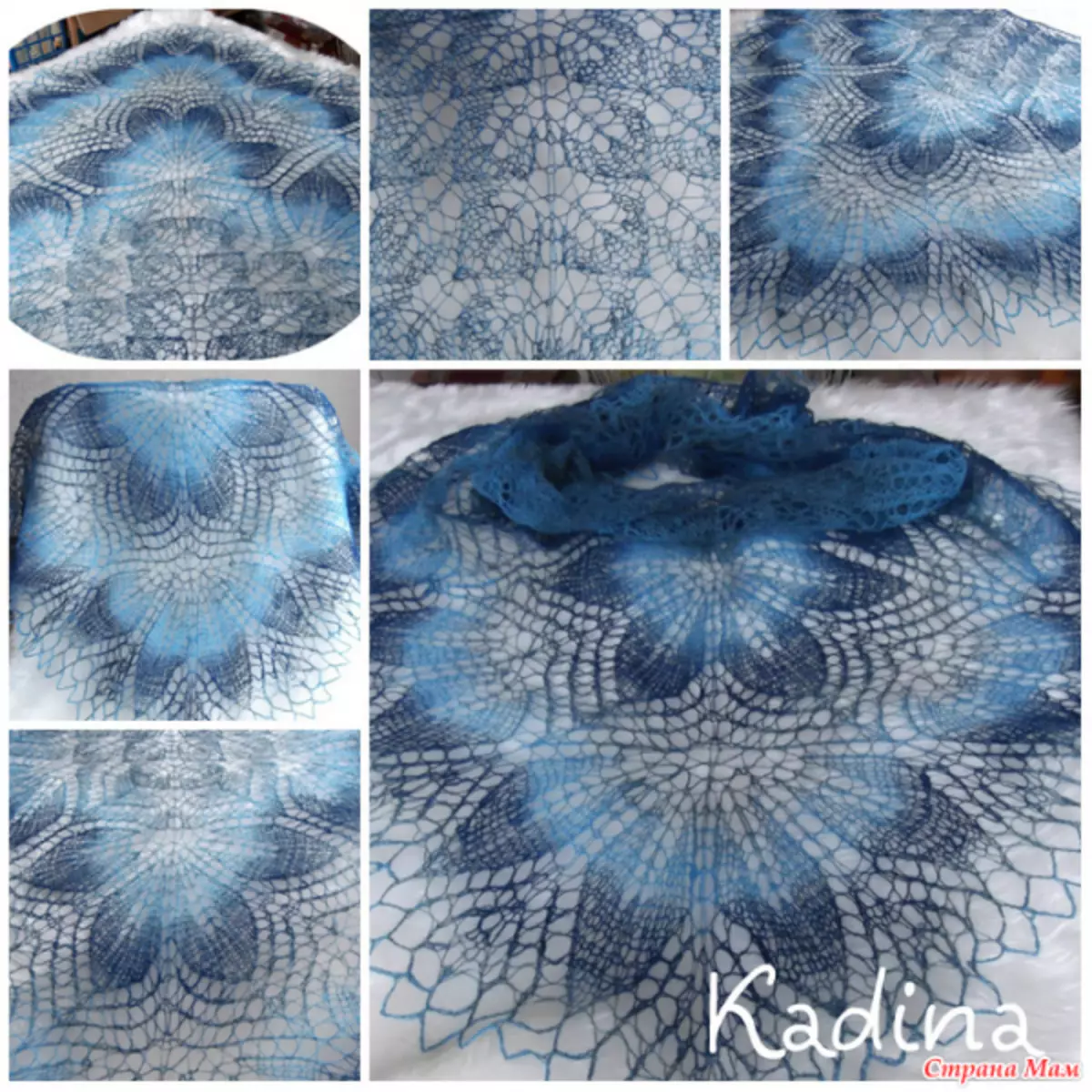
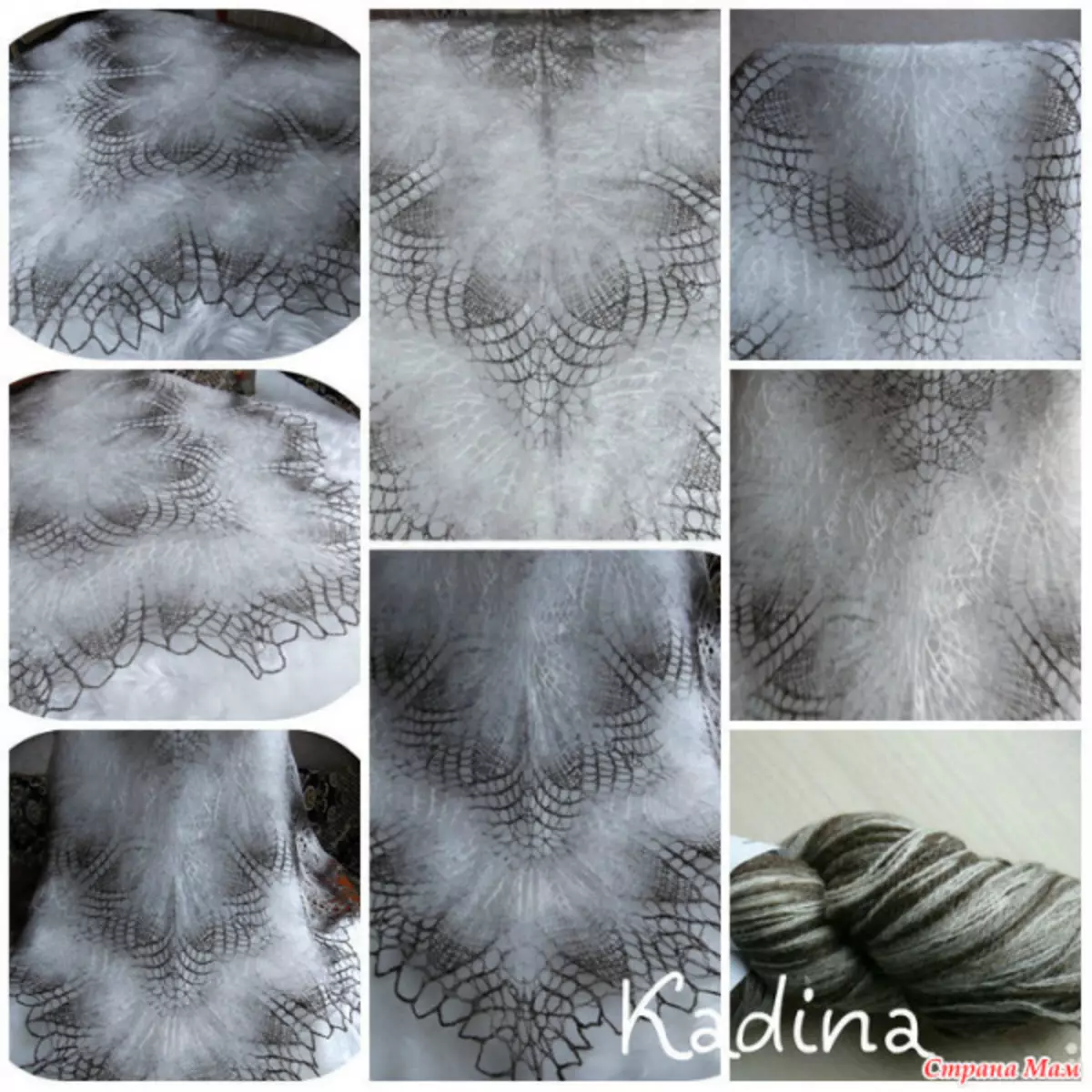
So, the materials and tools that will be needed:
- Four hundred forty meters thread;
- Ring needles with a thickness of 3.5 or 4 mm (for thick spokes of threads need more);
- pin or special marker;
- Fitting knitted hook.
The density of the lace pattern in this case is a twenty-one loop in width and eighteen rows in height, after blocking is a square ten centimeters.
The size of the knitted canvas in the finished form: height - 0.58 m, width - 1.14 m. You can easily achieve the desired size due to the repetition of the Fern pattern.
Article on the topic: Knitting for dolls. Magazine with schemes
Knitting scheme
For the convenience of the scheme, we recommend printing so that they are always at hand.
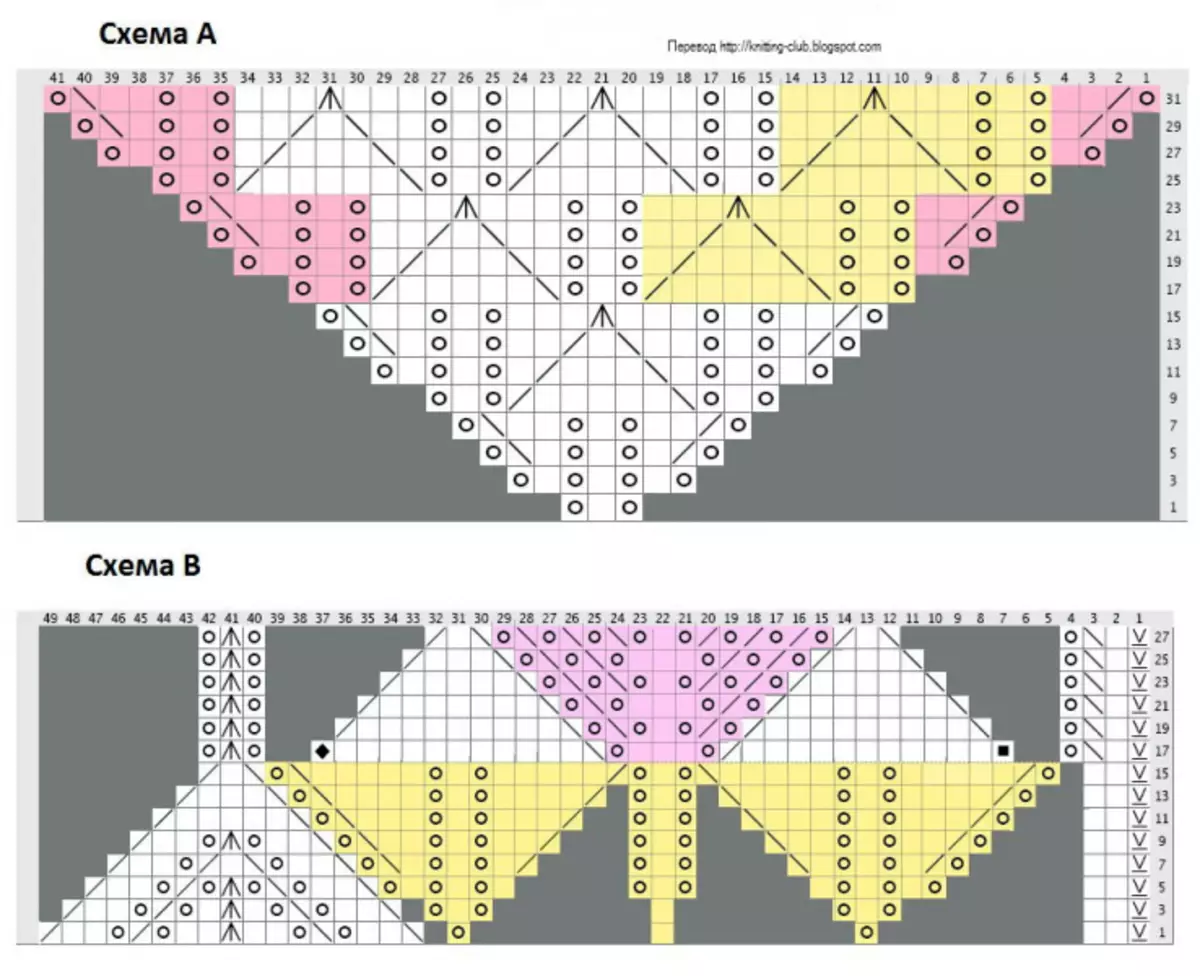
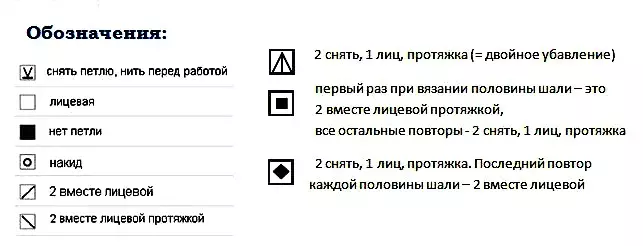
Work process
Getting Started Knitting Haruni, set "Ribbon":At the end of the set by a rod knube, according to scheme A.
Note that the scheme contains only half shawl. It also does not have seven loops: 3 first, 3 latest edge and middle loop. The first loop to remove, 2 persons. (Total 3 edges), after that, to work according to the scheme to the right left, one persons. (middle) loop, again knit according to the scheme to the right left, completing 3-facial (edge). Even rods fit on the following principle: to remove the first loop, 2 persons., Pouring to the last 3-loops, 3 facial.
Perform a diagram A before the appearance of twelve "twigs" on both sides of the middle loop (or repeat 4 times from the 17th to 32 rows, on the Rapport scheme is accentuated in yellow). "The twig" is a facial loop, on both sides of which the Nakid is made. If it is necessary to increase / reduce the size of the web, it is necessary to complete the scheme and the even number of "twigs" in the other half. Note on the distribution of the number of yarn: about half of the threads will go to the execution of the V. Scheme
Scheme V. In the first 15 rows of the scheme there is an active addition of loops, and in the 2nd half of the circuit, the number of loops in the row decreases. Here, as in the scheme A, only half shawl is depicted, although it includes edge loops. The initial 15 rows of the scheme, the loop between pairs are devoted to the leafy pair of leaflets. Two leafs (accent yellow in the diagram) begin and complete halves shawl. The entire row of schemes in it is lying like this: right to left according to the scheme, repeating all it (except for edge), finish the last repetition of the first half, the last yellow loop. Then the middle loop (no in the diagram). The same for the second half, starting and ending with the yellow segment. And three edges at the end.
Article on the topic: Booties without seam knitting needles: master class for beginners with video
The recovery of the leaflets by outbreaks - rows from the 17th to 27, the addition of the loops is only between the leaves (pink color). After four sheets (two pairs) appear in the center of the canvas, there should be absorbs between all the leaves (highlighted pink). From the 17th row (pink segment), the middle loop goes into the middle section. The edges are tested as follows: nakid, 2 together face, 2 facial (instead of 3-facial). Back in the 17th row there are special loops, be sure to pay attention to them.
Registration of the edge of the canvas:
Loop closing methods
We close the loop after the completion of the last row (chatted iznanka). This can be done in two ways: the first - crochet, the second - cord. The latter requires more yarn for execution. If a thin thread was used in the work, the second option is advisable if you decide to complete the first, make it two threads.
Regardless of which methods you choose, it is important to remember that the loops need to close very freely.
Performing the first way: Crochet to check together with 4 persons., 6 Waards. The loops in the chain, to train together the following 3 loops of the left knitting needles. Close one loop by throwing the first loop (on the hook) to just a stick loop. Again 6 remuneration. The loops in the chain, 3 together face, close one loop. Continue further, and three together the facial must match the pattern and form the top of the leaf.
Before close the loops in the second way, it is necessary to complete the execution of the vertices of the leaves. To do this, tie another row in the picture. Now the way it is: to lie 2 loops together face, another 2 together face, then return both the resulting loops on the left knitting needles and again to register their face, once again to return them to the left knitting needles and once again to lie face, and so eight times. In the end, a narrow cord will be released. Remove these loops on the right knitting needle, to penetrate the three loops together face, one loop to close, cross the average over the awaited, dropping it from the needles. On the left needles again to move the two loops, two facial. Thus, handle the edge of the product completely. Three facial together must coincide with the top of the leaf. Tighten the thread, cut, leaving a small segment. Then hide it, inspired in the drawing.
Article on the topic: "Burenka on the grass" - a children's rug
Another option is the Haruni model with a double border. Knitting schemes:

L in a yellow cage - facial loop.
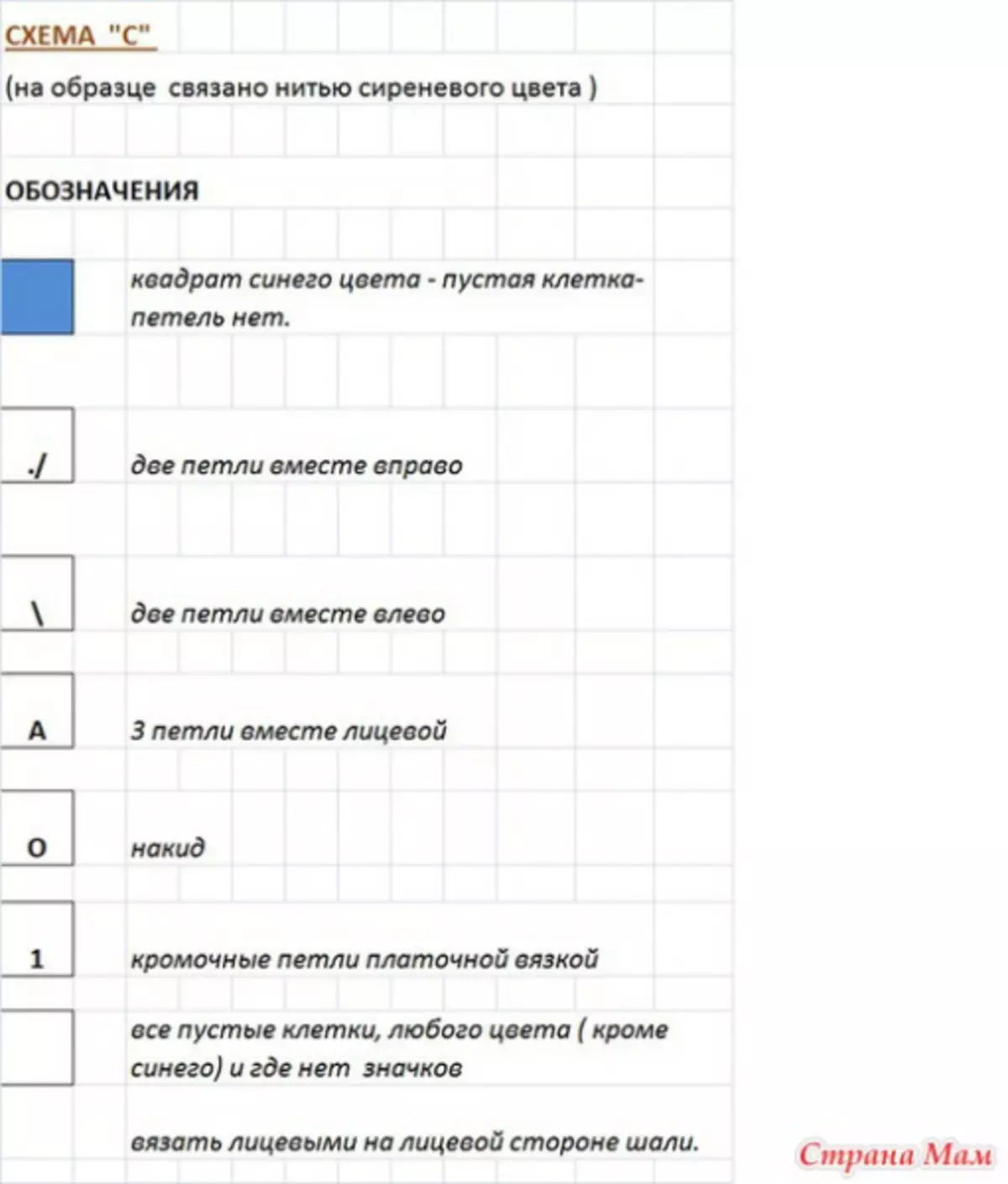
Washing and wet-thermal processing Shawl:
Shawl to moisten with water, stretch it as much as possible, giving the shape of a triangle or sickle, fix the pins, dry.
Video on the topic
Another additional video for fixing the material.
